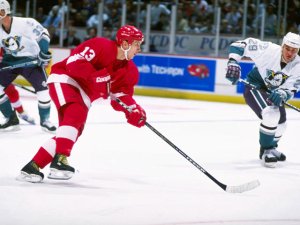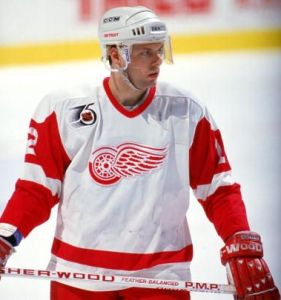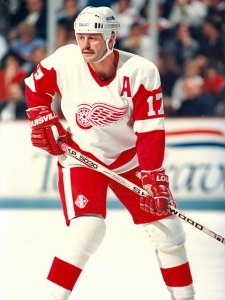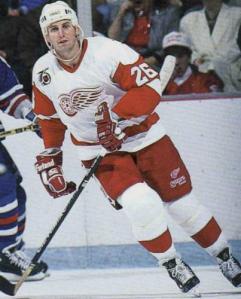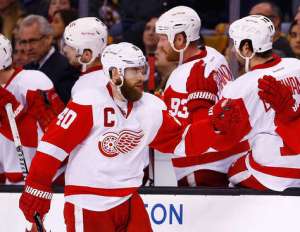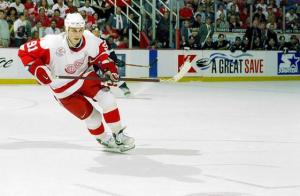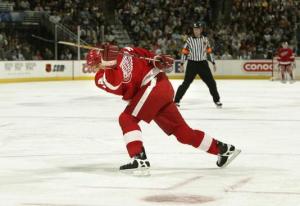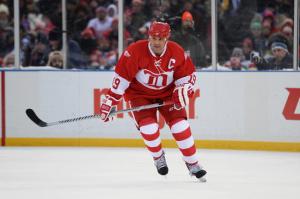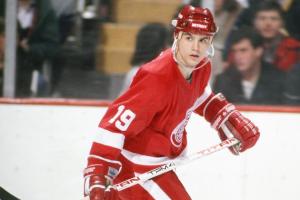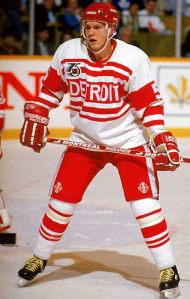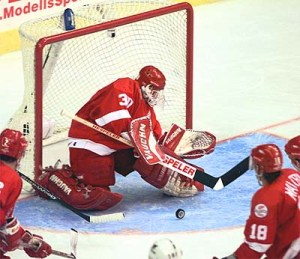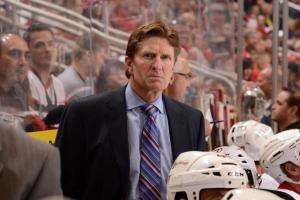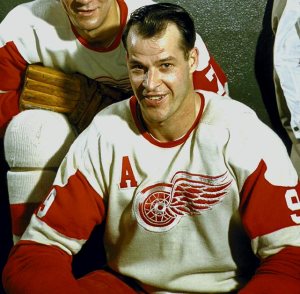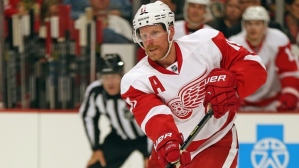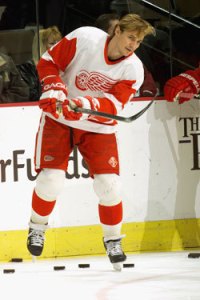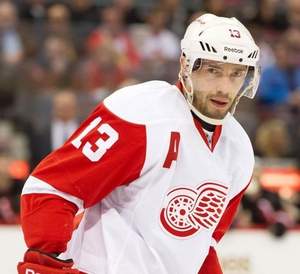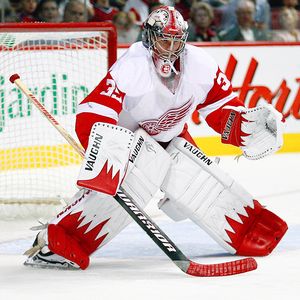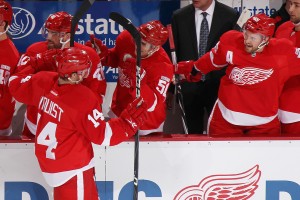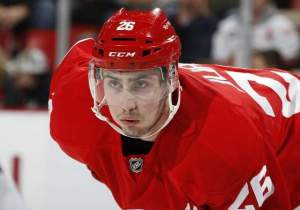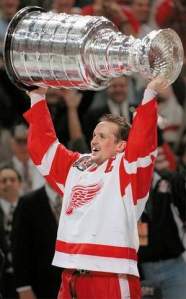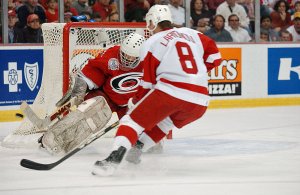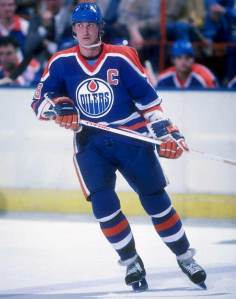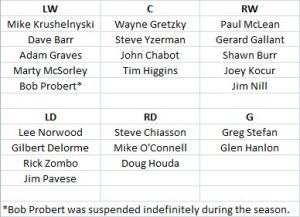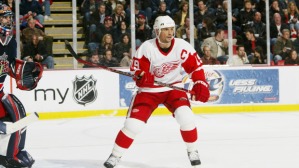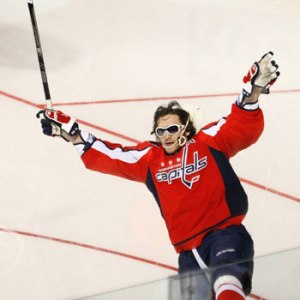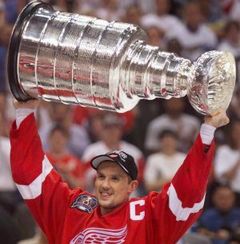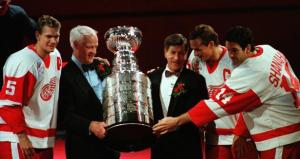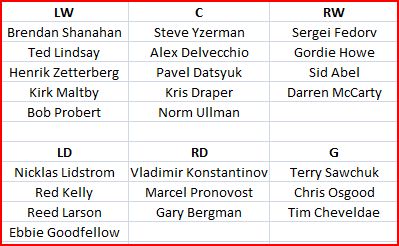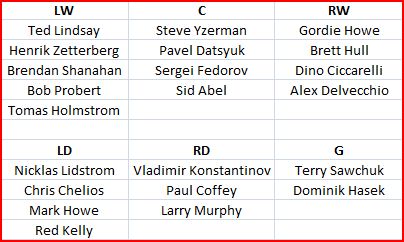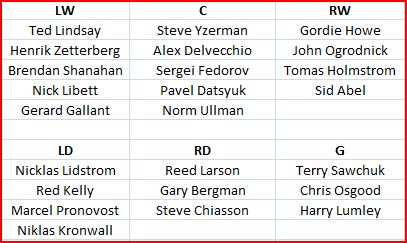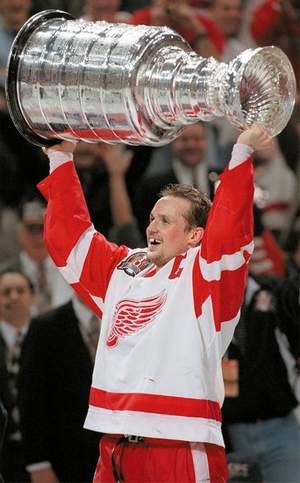
Photo courtesy of Mary Schroeder/Detroit Free Press
In the spring of 1997, the Detroit Red Wings captured Lord Stanley’s Cup for the first time in 42 years. Steve Yzerman led the team through a trying regular season to the finals, where the Red Wings faced off against the Philadelphia Flyers. You all know this though. We all know this. I even have the championship video committed to memory and have been able to recite the lines from the “documentary” since I was a kid.
This Stanley Cup victory was especially sweet for Detroit because most of the Red Wings’ fan base had not seen a championship in their lifetime. It was the first one I had seen, despite the fact that I was only seven. It was also the first my dad had seen though. That victory was the first time the Stanley Cup was brought home to Hockeytown since my Grandpa was 33 years old.
Detroit had a rough season that year trying to find an identity. They had won a league record 62 games the previous season, but did not bring home the Cup. The year before, the Red Wings were swept by the New Jersey Devils in the first round. The Wings had a coming-together moment on March 26th that propelled them into the playoffs on a high note. Darren McCarty finally got his vengeance on Claude Lemieux for his hit on Kris Draper the previous spring. Patrick Roy came to Lemieux’s aid, but Brendan Shanahan met him at center ice. Adam Foote and Mike Vernon soon joined the fray. All of this started from a stop in the play because of Igor Larionov going after Peter Forsberg. Even though “The Professor” was over a decade younger than Forsberg, he stood up and helped to inspire the team. Detroit came back to win the game 6-5 in overtime.
Those were only a few players crucial to the team’s success that year. Scotty Bowman and the Red Wing’s front office put together a grittier team than recent years, instead of relying on talent alone. Let’s take a look at the lineup and how each player was acquired.
C: Steve Yzerman (C) – Drafted 4th overall by Detroit in the 1983 Draft.
LW: Tomas Sandstrom – Acquired from Pittsburgh for Greg Johnson halfway through the season.
RW: Darren McCarty – Drafted 46th overall by Detroit in 1992.
C: Sergei Fedorov (A) – Drafted 74th overall by Detroit in 1989.
LW: Slava Kozlov – Drafted 45th overall by Detroit in 1990.
RW: Doug Brown – Claimed off waivers from New Jersey in 1995.
C: Igor Larionov – Acquired from San Jose for Ray Sheppard in 1995.
LW: Brendan Shanahan – Acquired from Hartford along with Brian Glynn for Keith Primeau, Paul Coffey, and a first round pick one game into the season.
RW: Martin Lapointe – Drafted 10th overall by Detroit in 1991.
C: Kris Draper – Acquired from Winnipeg in 1993 for future considerations ($1).
LW: Kirk Maltby – Acquired from Edmonton for Dan McGillis in 1996.
RW: Joey Kocur – Signed as a free agent in December of that season.
D: Nicklas Lidstrom – Drafted 53rd overall by Detroit in 1989.
D: Larry Murphy – Acquired from Toronto at the trade deadline for future considerations.
D: Slava Fetisov – Acquired from New Jersey in 1995 for a third round pick.
D: Vladimir Konstantinov – Drafted 221st overall by Detroit in 1989.
D: Aaron Ward – Acquired from Winnipeg for Paul Ysabaert and a fourth round pick in 1993.
D: Bob Rouse – Signed as a free agent prior to the 1994-95 season.
G: Mike Vernon – Acquired from Calgary for Steve Chiasson in 1994.
G: Chris Osgood – Drafted 54th overall by Detroit in 1991.
Other key contributors that season drafted by Detroit were Mathieu Dandenault, Jamie Pushor, Tomas Holmstrom, Kevin Hodson, and Anders Eriksson. Detroit signed Tim Taylor as a free agent in 1993.
Shanahan, Lapointe, McCarty, Sandstrom, Draper, Maltby, and Kocur gave Detroit sandpaper that they could balance across all four lines. The acquisition of Larry Murphy gave Detroit’s defense a former Cup winner that brought out the best in Nick Lidstrom.
No one predicted this team would win the Cup in 1997 after everyone did the previous year. The Red Wings overcame adversity to eventually become the best team in the NHL. Who is to say the Red Wings of 2014 can’t do the same?
